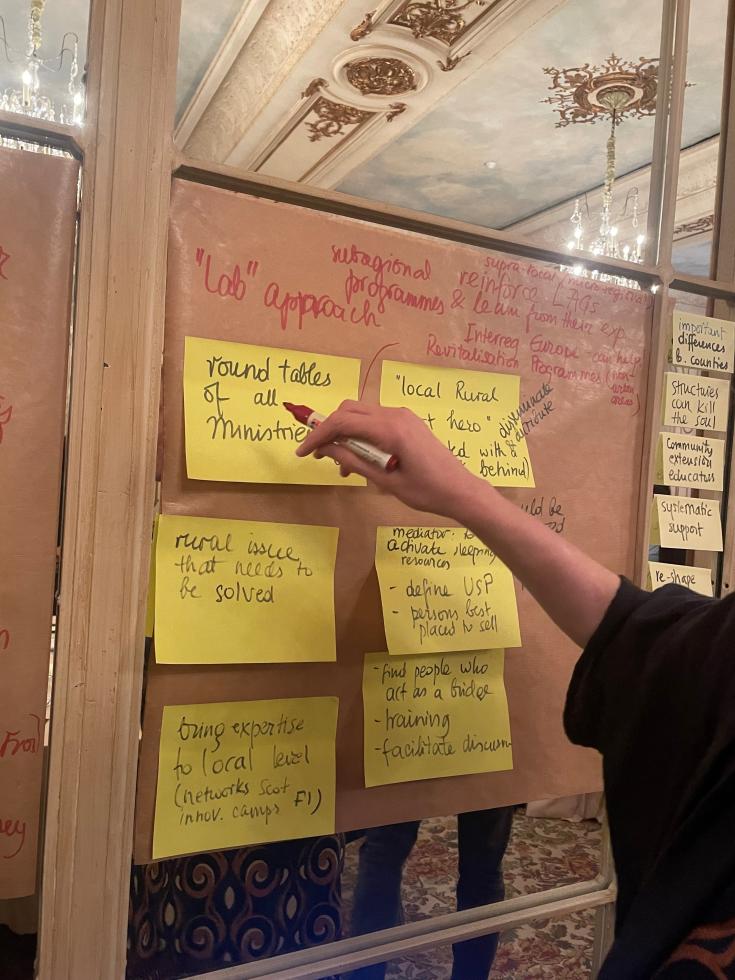A Policy Action Lab to bring the Rural Pact closer to citizens

Erik Gløersen, Thematic Expert on Social topics at the Interreg Europe Policy Learning Platform, attended a Policy Action Lab entitled “Bringing the Rural Pact closer to citizens” which was, organised by the Rural Pact Support Office. The objective was to develop proposals on enhancing the achievement of the Rural Vision and Pact objectives at the local level. These proposals will be integrated in a future Policy Brief.
As a reminder, the Rural Pact is a framework for cooperation between public authorities, civil society, businesses, academia and citizens, at the European, national, regional and local level. It was launched by the European Commission as part of its Long-Term Vision for EU’s rural areas and its associated Action Plan.
10 shared goals for rural areas
- Attractive spaces, developed in harmonious territorial development, unlocking their specific potential, making them places of opportunity and providing local solutions to help tackle the local effects of global challenges.
- Engaged in multi-level and place-based governance, developing integrated strategies using collaborative and participatory approaches, benefiting from tailor-made policy mixes and interdependencies between urban and rural areas.
- Providers of food security, economic opportunities, goods and services for wider society, such as bio-based materials and energy but also local, community-based high-quality products, renewable energy, retaining a fair share of the value generated.
- Dynamic communities focusing on well-being, including livelihoods, fairness, prosperity and quality of life, where all people live and work well together, with adequate capacity for mutual support.
- Inclusive communities of inter-generational solidarity, fairness and renewal, open to newcomers and fostering equal opportunities for all.
- Flourishing sources of nature, enhanced by and contributing to the objectives of the Green Deal, including climate neutrality, as well as sustainable management of natural resources.
- Fully benefiting from digital innovation with equal access to emerging technologies, widespread digital literacy and opportunities to acquire more advanced skills.
- Entrepreneurial, innovative and skilled people, co-creating technological, ecological and social progress.
- Lively places equipped with efficient, accessible and affordable public and private services, including cross-border services, providing tailored solutions (such as transport, education, training, health and care, including long-term care, social life and retail business).
- Places of diversity, making the most of their unique assets, talents and potential.
These are some of the key proposals the emerged from discussions:
- Creating permanent, slim and efficient support structures. Their roles can be to facilitate reform processes, keep the momentum in dialogues and exchanges and help identify funding solutions.
- More and better sharing of good practices and horizontal dialogues between local authorities.
- Organising exchange visits between administrations at different levels, to get a better shared understanding of how integrated, cross-sectoral policies can be designed and implemented.
- More focus on local capacity building and training, enabling local actors to become mediators between stakeholders with sometimes diverging objectives and establishing preconditions for collective action,
- Establish mechanisms to make expertise more easily accessible to rural local actors, e.g. networks of experts, authorities and stakeholders,
- More ambitious local innovation agendas, focusing their specific innovation needs (which are not necessarily technological).
Policy support solution provided by the Interrreg Europe programme were presented to participants at the Policy Lab. While some of them are already involved in Interreg Programme, many discovered Policy Learning Platform services such as Peer Reviews and Matchmakings. These services could be mobilised by local and regional authorities to help test and finetune all the key proposals tested above. The Interreg Europe Good Practices Database also provides numerous relevant sources of inspiration.
There is therefore a great potential for synergies between the Interreg Europe programme and Rural Pact activities targeting the local and regional levels.